Is WannaCryptor ransomware just a clone of CryptoLocker?
This piece of malware has emerged in late February of 2017, but its first iteration was known as Wcry virus. Now it makes a comeback under the name of WannaCryptor ransomware but does exactly the same. To keep your files and your privacy secured you need to know all the details about the newest version of the virus. But in case you have already caught it, you need to know how to delete WannaCryptor ransomware, so we hope you will find our tips useful.

As for the WannaCryptor ransomware pattern of action – the scheme is typical: your money for encryption or you will lose it all. Infected files get a new extension of «.wcry», hence the first name of the earlier version of WannaCryptor. When the virus is already in and doing it is easy to miss that something is wrong and your security along with the data is compromised if you don’t have any anti-malware protection.
After finishing the encryption, this ransomware informs the user with a note that demands a ransom to be paid. In addition to traditional ransom note (!Please Read Me!.txt), this locker changes your current wallpaper with a picture called !WannaCryptor!.bmp. The ransom text is simple: «Ooops, your important files are encrypted. If you see this text, but don’t see the “Wanna Decryptor” window, then your antivirus removed the decrypt software, or you deleted it from your computer». As you see, the virus wants to trick users into downloading another piece of malware called !WannaDecryptor!.exe. This method was
As far as we know, this malware uses AES and RSA encryption algorithms. Furthermore, WannaCryptor ransomware is also capable of altering Windows Registry which allows managing Shadow Volume Copies. Hackers promise to fix your files for $300 (in Bitcoins) implying that there is no other way to decrypt the data without a key and their decryption program. When your sensitive files are corrupted, you will most likely succumb to paying the ransom, but we recommend focusing on WannaCryptor ransomware removal instead.
And a quick reminder for you all: never the believe internet crooks. It is a common practice to threaten victims and making them think that they are out of options. There are no guarantees that cyber criminals will actually unblock your computer and restore the data. Plus, you will become a sponsor for next attacks contributing to the development of newer viruses and malicious software like this one.
There are several main strategies of delivering viruses into your computer. Most likely, the inventors of WannaCryptor ransomware do actively use them all right now:
– Software installers: malware programs often come bundled with other software you might need. Unchecking all unneeded boxes during the installation is a must. Be careful with the programs that come from untrusted sources.
– Malware spam: emails are still one of the most popular methods of distributing malicious software like this one. Suspicious attachments, unknown links, executable files, etc. in emails should not be opened. It is always a risk to get infected in one click.
– Redirects: sites are getting hacked each day, and malicious ads and hijackers are there for unsuspecting users ready to infect users with viruses and other malware.
There are two ways to get rid of the WannaCryptor Ransomware. You can do it manually if you know where the original malicious file is hidden. But it might take time. Plus, if you don’t know where to look you can accidentally delete wrong files. To avoid this, we recommend using a reliable anti-malware program. If your computer is infected with WannaCryptor Ransomware, it will be eliminated along with other threats found. Having an additional protection against cyber-attacks is highly recommended because other threats might come your way after previous are neutralized.
WannaCryptor Ransomware Removal Instruction
Automatic Removal for WannaCryptor Ransomware
Symptoms of WannaCryptor Ransomware infection on your computer can be: computer crashes, unusual homepage or search engine on your browser, unwanted pop-up ads and advertising banners. We recommend to download our automatic removal tool. This removal tool has been tested for WannaCryptor Ransomware threat removal and it is easy to use.
Removal WannaCryptor Ransomware with the help of technical experts
expert technical support

Manual Removal Instruction for WannaCryptor Ransomware
-
Click on the Start button in the left lower corner and select → Control Panel. After that find the Programs and Features (if you are running Windows XP , then click on Add/Remove Programs).
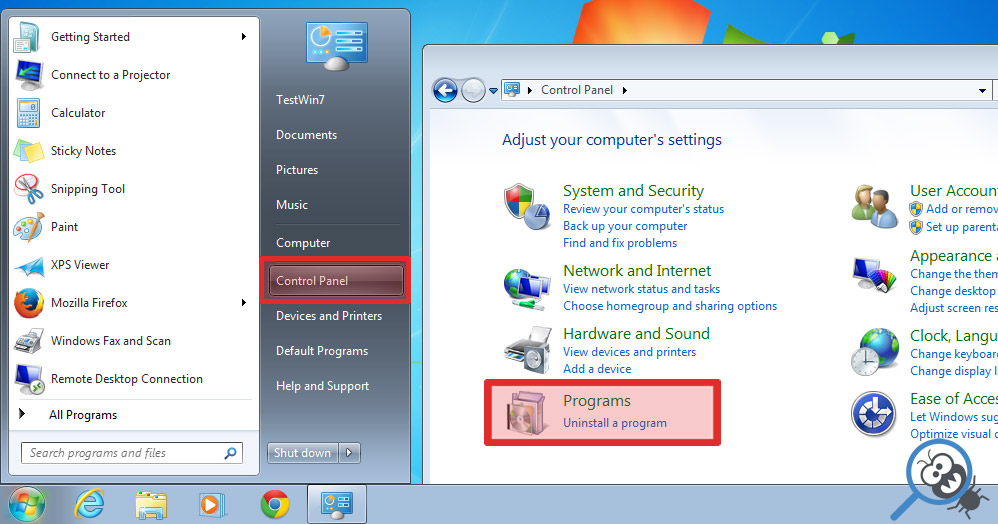
-
If you are running Windows 8 or Windows 10 operating system , then right-click on the Start which is in the lower left corner of the screen. After that select Control Panel and go to Programs/Uninstall a Program.
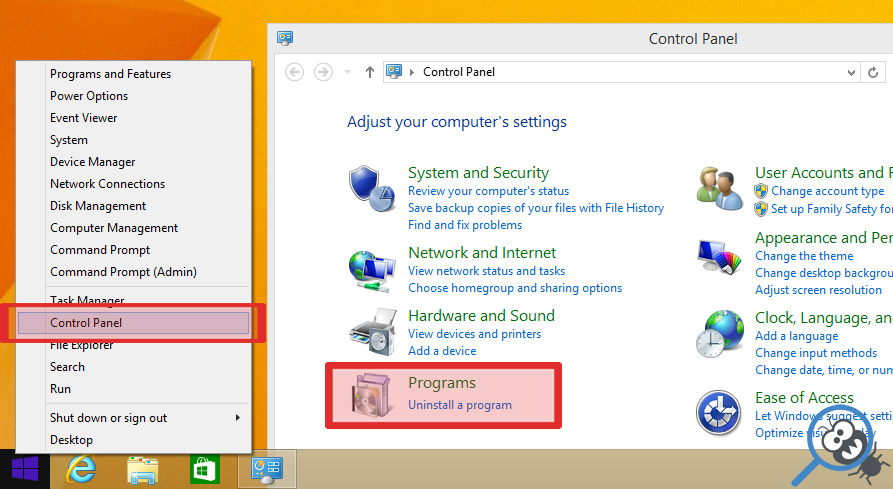
-
In the list of installed programs find the WannaCryptor Ransomware or any other recently installed suspicious programs.
-
Click on them to select and then click on Uninstall button to remove them.
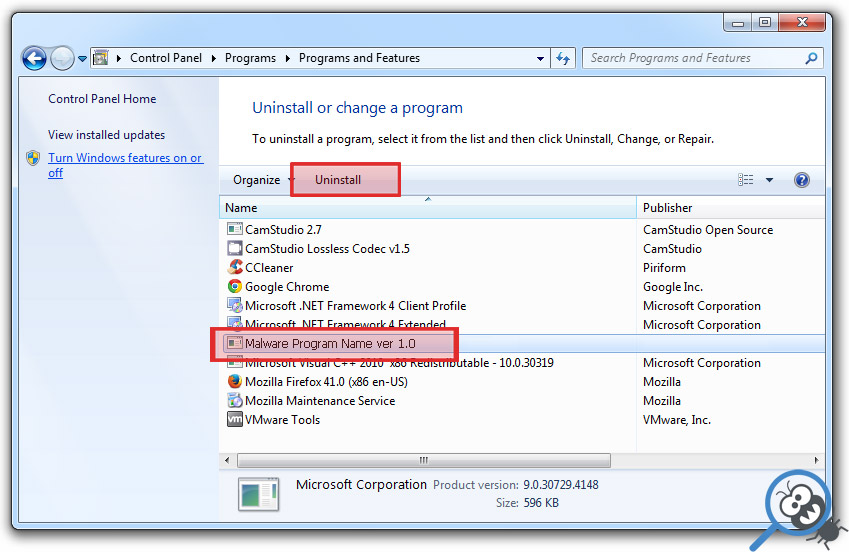
-
Open Internet Explorer, click on the Gear icon (IE menu) on the upper right corner of the browser and select Manage Add-ons.
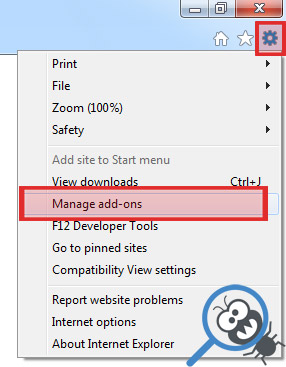
-
You will see a Manage Add-ons window. Now, find the WannaCryptor Ransomware and other suspicious add-ons. Disable them by right clicking and selecting Disable:
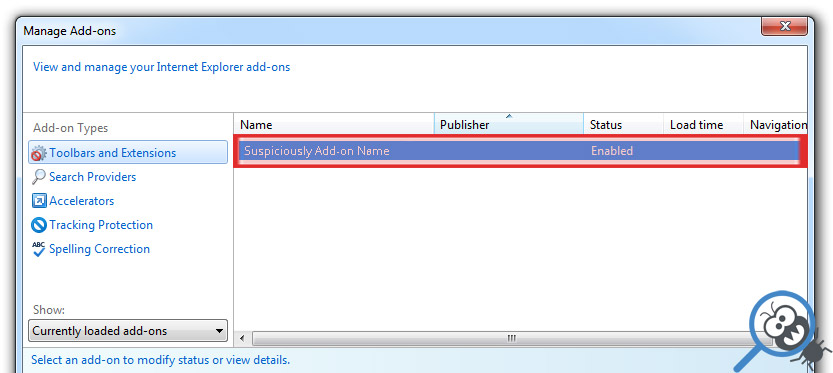
-
Click on the gear icon (menu) on the upper right corner of the browser and select Internet Options.
-
On General tab remove unwanted URL and enter your desired domain name such as google.com. Click Apply to save changes.
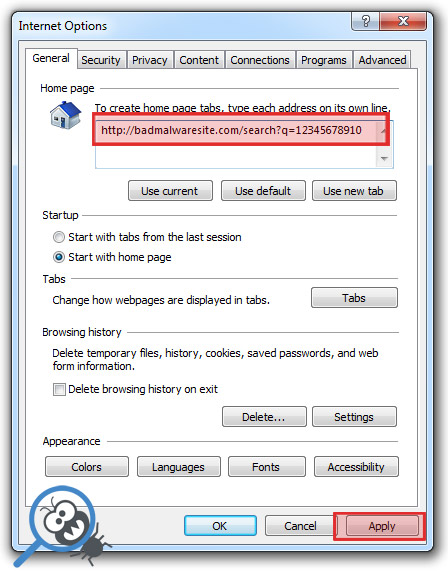
-
Click on the gear icon (menu) again and chose Internet options. Go to Advanced tab.
-
Now click on Reset button, the new window should appear. Select the Delete Personal settings option and click on Reset button again. Now you have deteled WannaCryptor Ransomware completely.
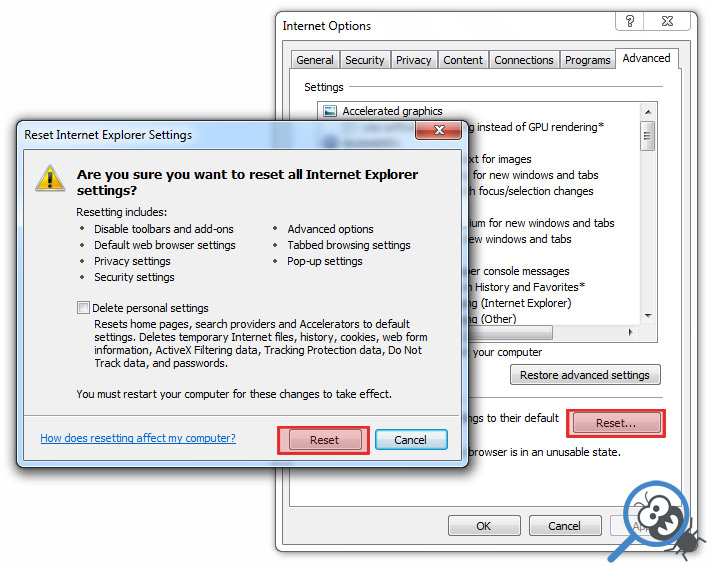
-
Open Mozilla Firefox, click on the menu icon which is located in the top right corner. Now select Add-ons and go to Extensions.
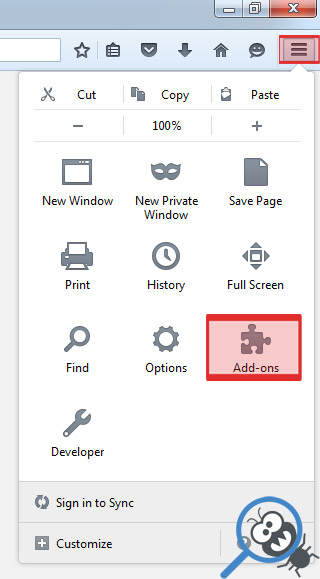
-
Now you can see the list of extensions installed within Mozilla Firefox, simply select WannaCryptor Ransomware and other suspicious extensions and click on remove button to delete them.
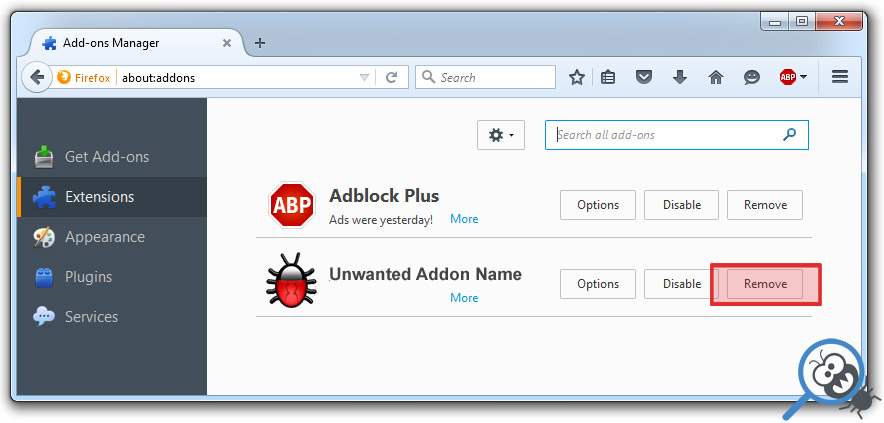
-
Click on the Firefox menu icon which is on the upper left corner of the browser and click on the question mark. Now, choose Troubleshooting Information option.
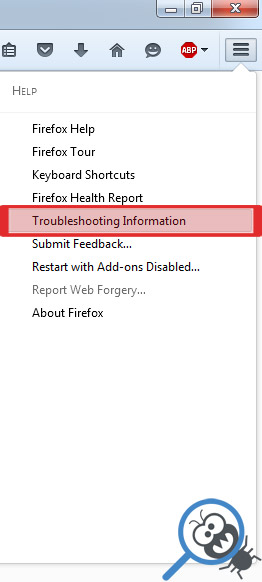
-
New windows will pop-up where you can see Refresh Firefox to its default state message and Refresh Firefox button. Click this button to remove WannaCryptor Ransomware completely.
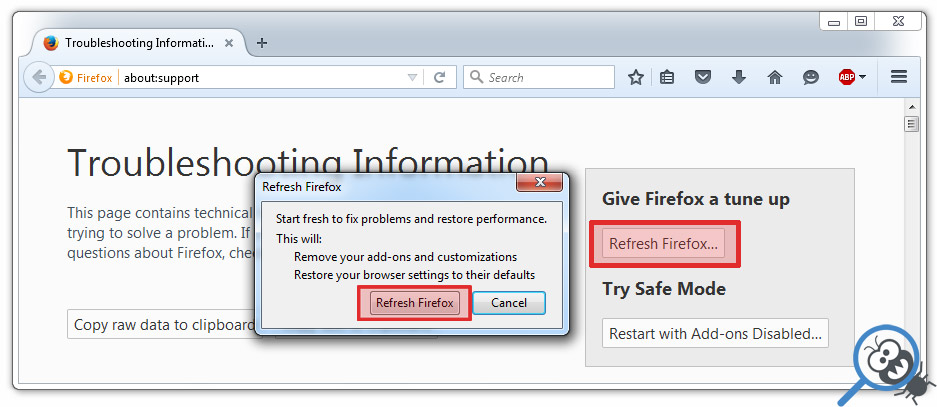
-
Open Google Chrome, click on the menu icon in the upper right corner and select More Tools and then select Extensions.
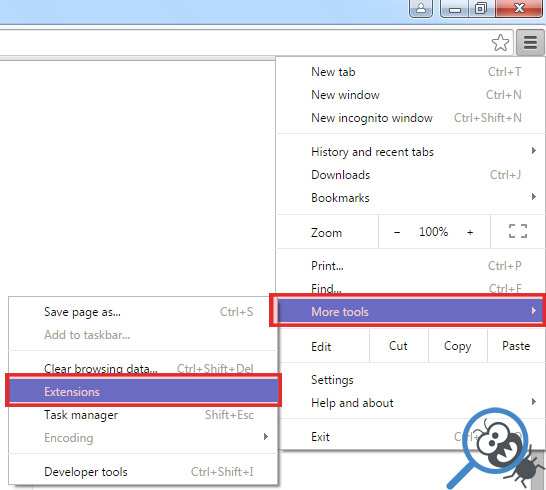
-
Now, find the WannaCryptor Ransomware and other unwanted extensions and click on trash icon to delete them completely.
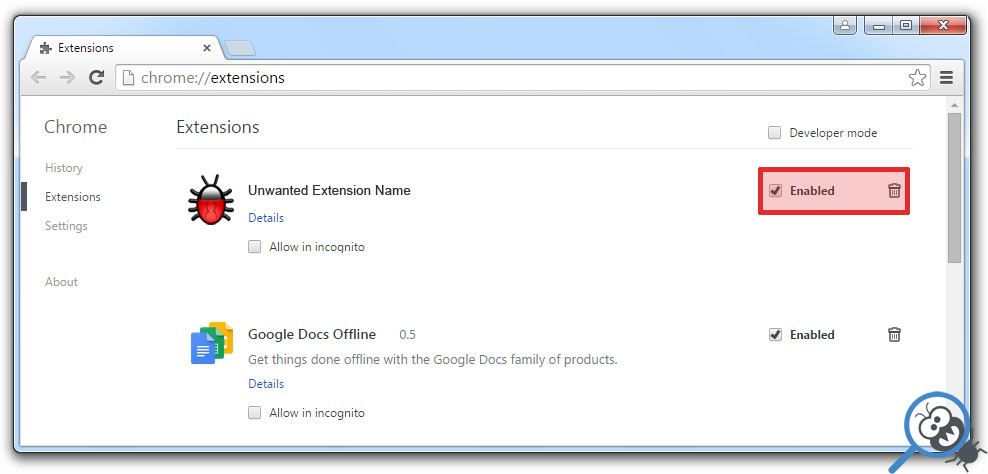
-
Click on menu icon once again and select Settings and then Manage Search engines it will be right under the Search section.
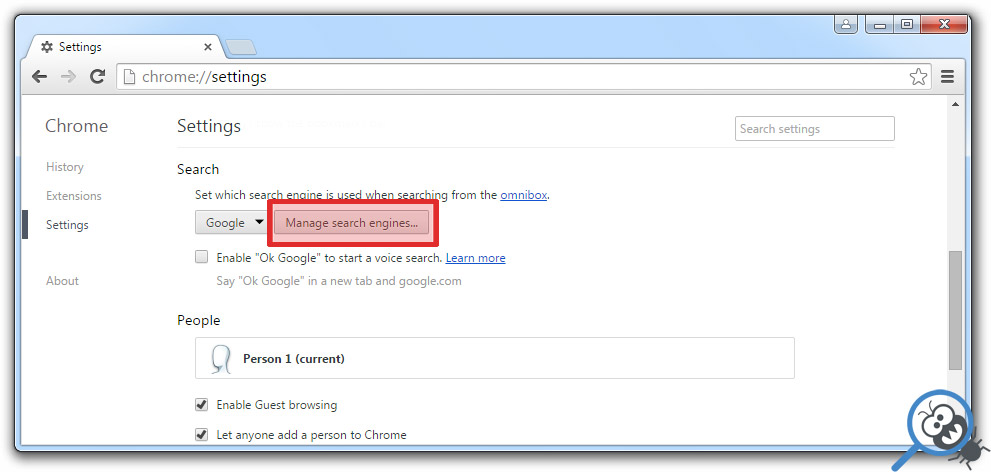
-
Now you will see all of the Search Engines installed in your browser. Remove any suspicious search engines. We advise you to leave only Google or your preferred domain name.
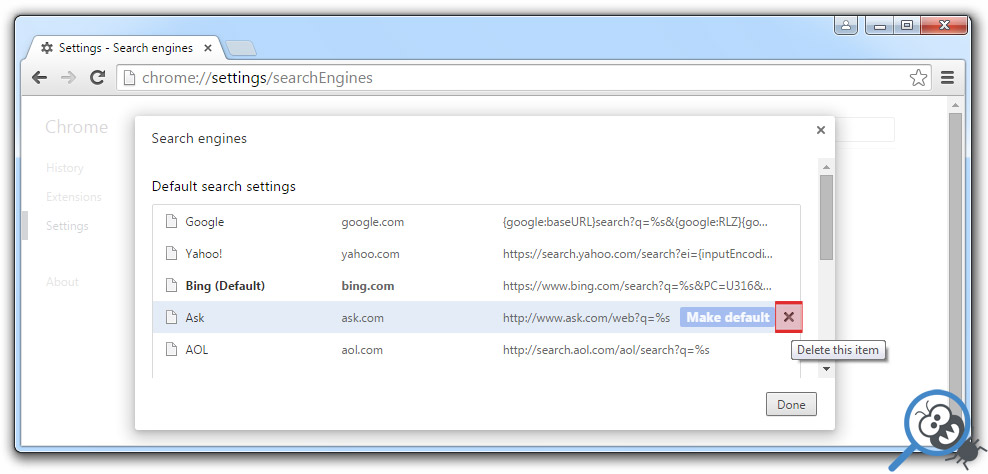
-
Click on menu icon which is on the top right corner of your Google Chrome browser. Now select Settings. Click Show Advanced Settings...
-
Scroll down to the end of the page and find there Reset settings and click on it.
-
New window will pop-up where you click on Reset button to confirm the action and remove WannaCryptor Ransomware completely.
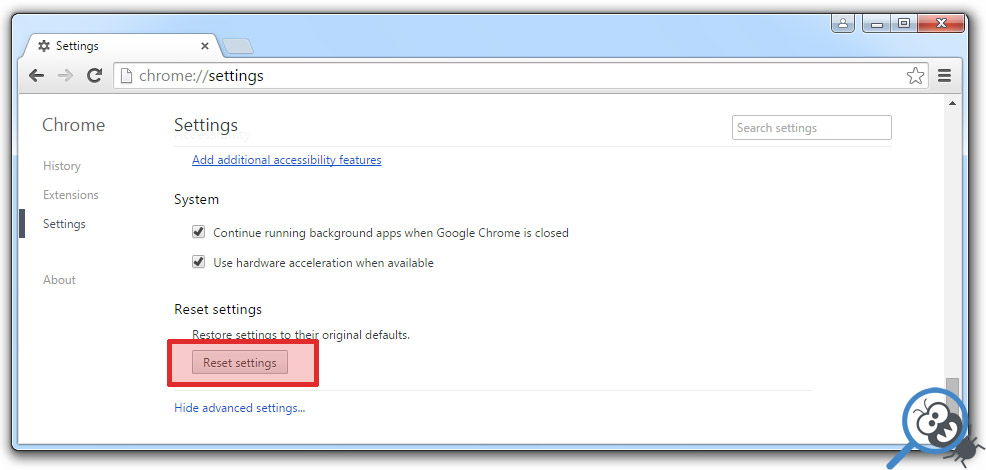
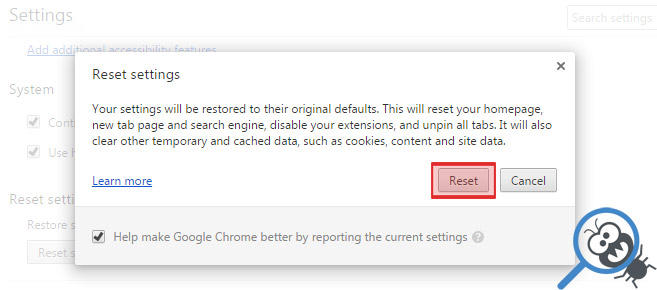
After performing all of the steps above you should have all of your web browsers clean of the WANNACRYPTOR RANSOMWARE and other suspicious add-ons and extensions. However to complete the removal procedure we strongly advise to scan your computer with antivirus and anti-malware tools like SpyHunter, HitmanPro 32-bit, HitmanPro 64-bit or Malwarebytes Anti-Malware. Those programs might help to you find registry entries of malware and remove them safely.
Related Posts
- How to kill Search.searcheasysta.com browser hijacker?
- Why you should stay away Www-searches.net
- All you need to know about Spoutly ads
- Is “Notice From Microsoft Corporation” real?
- Fake WindowsUpdater Ransomware removal guide
- Chromesearch1.info browser hijacker removal guide
- FinalRansomware removal guide
- How dangerous can GX40 Ransomware be?

WannaCryptor Ransomware has taken over my Mozilla Firefox! This is the second time! Thanks god I found your website with simple step by step instruction – Travis Golbert
Thank you again, this is the second time that WannaCryptor Ransomware has sneaked into my system – John Yakob
YES! Finally made it! I’ve managed to delete the WannaCryptor Ransomware from Mozilla’s add-ons and everything is back to normal now. Thank you for guiding me – Sabine Koch
Just removed WannaCryptor Ransomware! Took me 3 minutes. Thanks you guys – Eric